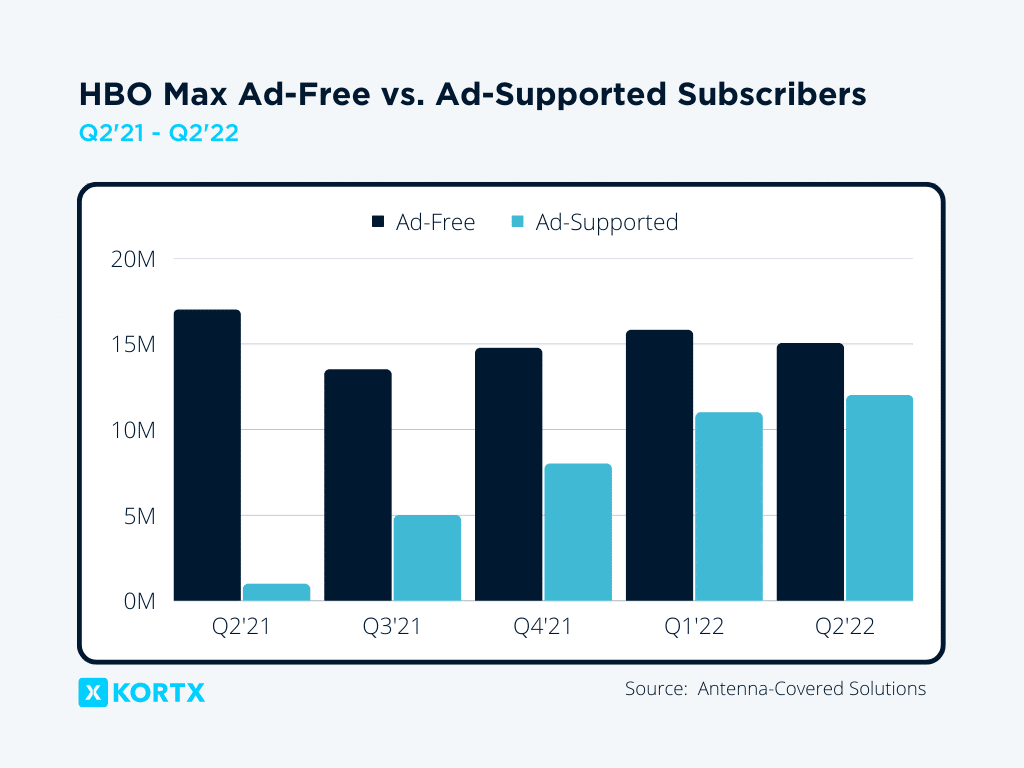CTV (Connected Television) is thriving, projected to grow 22.4%, outpacing every other major advertising format in 2024.
And its momentum is not stopping any time soon. Spending on CTV is expected to pass $25 billion this year and continue growing by double digits through 2027.
As Connected TV advertising continues to dominate digital marketing, we will look at more trends in store for this lucrative advertising format.
⚡ Insider Intelligence found that 94% of US households (around 120.86 million households) were reachable through programmatic CTV advertising in 2022.
1. FAST Streaming and AVOD Will Challenge SVOD
FASTs (Free, Ad-Supported Services) and AVOD (Advertising Video-On-Demand) are surpassing SVOD (Subscription Video-On-Demand).
By 2024, it’s predicted that half of the remaining SVOD providers will launch a FAST service. The Roku channel is expected to bring in a fifth of the population, or 67.8 million US viewers, this year.
⚡ It’s estimated that most online video service subscriptions will be partially or wholly ad-funded by 2030.
As more consumers tighten their belts and cut down on ad-free subscription services, AVOD services are projected to gain more than triple the US viewers than subscription OTT video this year.
Streaming services like Netflix and Max are also shifting their focus to profitability through new ad-based video tiers. After a rocky start, Netflix advertising is making great strides, with a promising 5 million global monthly users on its ad-supported tier. This accounts for 25% of new signups in countries where it’s available.
As we saw from Max’s ad-supported tier launch, growth doesn’t explode overnight but conservatively, showing that although SVOD may still dominate, AVOD is steadily marching towards scale.
2. Measuring CTV Will Be Elevated
Traditionally, measuring CTV has primarily focused on Video Completion Rate (VCR), simply determining if an ad was viewed in its entirety. However, with CTV’s measurement capabilities, advertisers can adopt more sophisticated models to understand the effect of CTV advertising on desired outcomes.
With CTV ads, exposure is nearly guaranteed, as viewers cannot skip them, resulting in exposure rates of around 95%. The only instance where a CTV ad may not be viewed in its entirety is if someone turns off their TV.
How can CTV advertisers go beyond assessing completion rates?
“Sophisticated measurement in CTV advertising goes beyond assessing completion rates alone. It involves evaluating how CTV and OTT (Over-the-Top) advertising contribute to actual outcomes and impact consumer behavior. Did it drive a website action? Did it influence a purchase? One methodology is through the application of cross-device measurement. For example, by serving the same ad on CTV and subsequently on mobile devices, advertisers can track actions taken by viewers after exposure. Then, you can start to understand CTV and OTT’s impact on actual outcomes rather than just “Did they see the ad or not?”

While implementing a more sophisticated measurement approach in CTV advertising is a strategic move, it may not suit every advertiser. It is important to assess whether there are relevant actions to measure and if the additional insights gained align with campaign goals.
3. Ads Will Become More Interactive
Innovid found that, in the last year, interactive CTV campaigns drove a 5.45% engagement rate, compared to a rate of 0.97% for mobile and PC.
And advertisers are catching on to this trend. The Interactive Advertising Bureau (IAB) found that nearly one-third to one-half of ad buyers plan to shift investments toward shoppable and retail media network ads.
Roku recently established a pilot partnership with Walmart to integrate shoppable ads into their platform. Viewers can click on shoppable ads from the retailer and purchase directly from the Roku platform, as simple as using a TV remote.

An example of a Shoppable CTV ad. Viewers scan the QR code with their smartphones to shop.
Amazon’s Advertising Benchmarking Study also found that interactive video ad campaigns were +1.3x more likely to deliver positive brand lifts than those without an interactive component.
Other interactive CTV formats like picture-in-picture (PIP), border, overlay, and carousel give advertisers additional options to showcase their brand, making it extremely versatile.
4. Gen Z Loves CTV
For advertisers looking to target younger audiences, CTV has emerged as an excellent avenue, with CTV viewership among Gen Z approaching 55 million viewers next year.
A study revealed that Gen Z allocates the highest monthly spending on subscription services, averaging around $377 across all respondents, with video streaming being the most popular subscription choice (96%).
Gen Z’s viewing habits extend beyond mobile-only streaming, as 92% of respondents reported watching at least some TV content.
Also, one in three have scanned a QR code on a TV ad with their phone, with 38% having used a connected voice device to make purchases. This gives interactive CTV ads an edge over the younger generation.
About 45% of Gen Z regularly engage in mobile shopping while watching TV, eliminating the need for advertisers to repeatedly bombard them with ads in hopes of generating a purchase. Instead, advertisers must focus on creating compelling content that prompts immediate action from this demographic.

5. CTV Will Become More Efficient with Automation
With programmatic TV advertising offering highly targeted audience impressions that come and go in a matter of milliseconds, the race is on to use automation and artificial intelligence (AI) to optimize CTV campaigns.
Demand Side Platforms (DSPs) are at the forefront of this AI race, integrating and analyzing vast amounts of audience data in real time. The scale of data involved, including household data, behavioral trends, and viewing patterns, is too immense for human teams to handle effectively. That’s where AI-driven analytics step in.
Incorporating AI with DSPs could help make swift, informed decisions and compete for limited CTV impression opportunities.
They are also learning to detect fraudulent CTV media buys, safeguarding advertisers’ budgets from wasteful spending and providing protection for advertisers. This capability protects online advertising budgets against wasteful spending and potentially fraudulent activities.
The Bottom Line
As traditional TV adverising spend declines, CTV is only picking up. CTV’s rapid growth is driven by several key trends that advertisers can’t ignore. With the rise of ad-supported programming with AVOD and FAST, increased Gen Z viewership, and enhanced measurement capabilities, advertisers who haven’t yet used CTV advertising in their campaign mix would be wise to start now.
📺 Advertise On CTV Today.
Take your audience on an unskippable and unstoppable journey that compels them to take action using our data-driven approach to CTV advertising.
Rachel McGovern is the VP of Sales at KORTX. She is loving life as an empty nester and is consistently manifesting being the first person to win Powerball by playing via an app.

